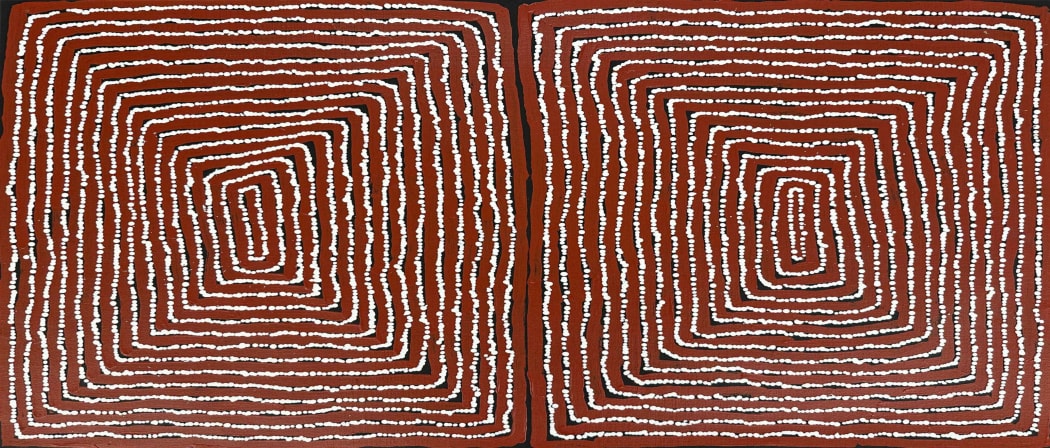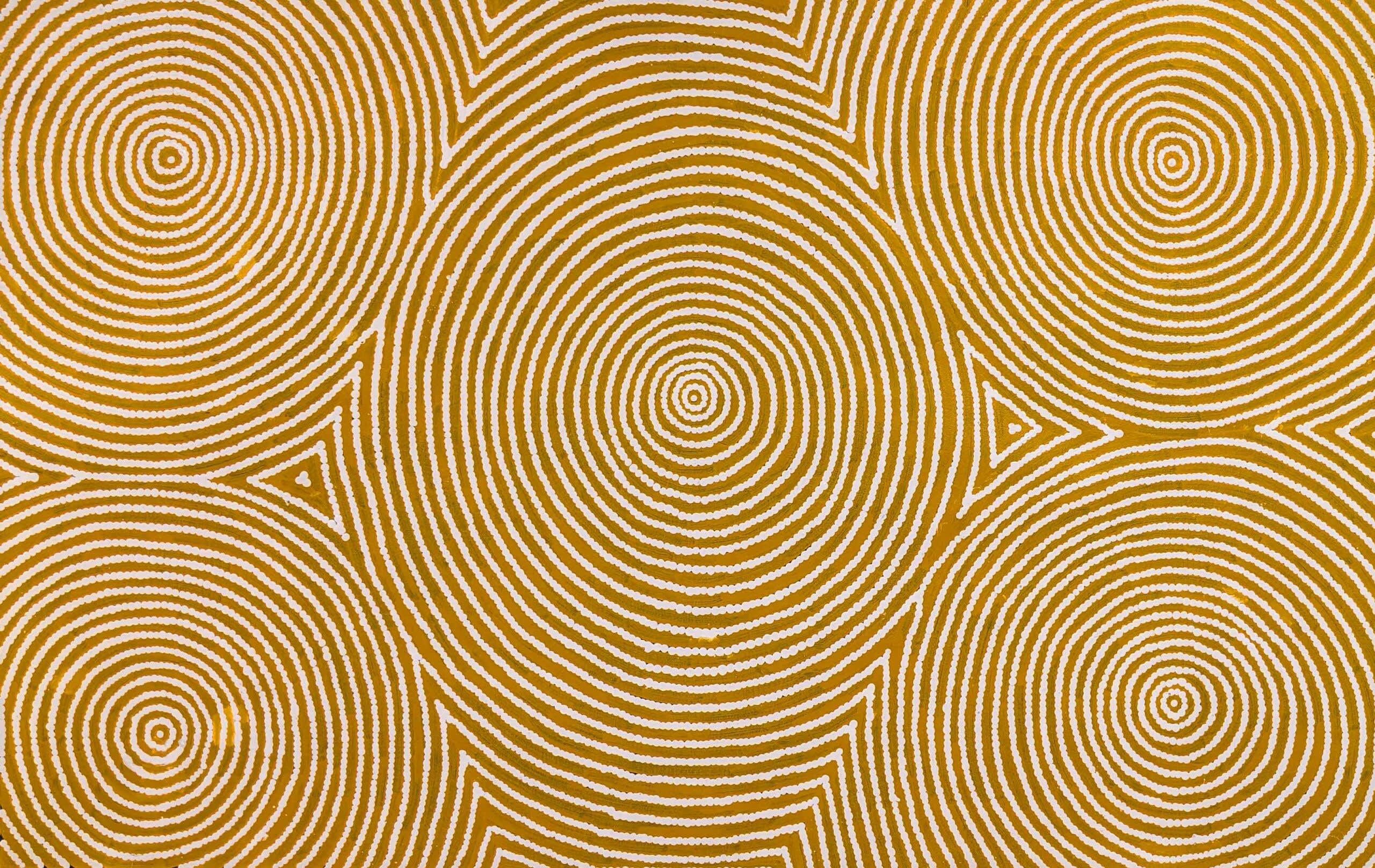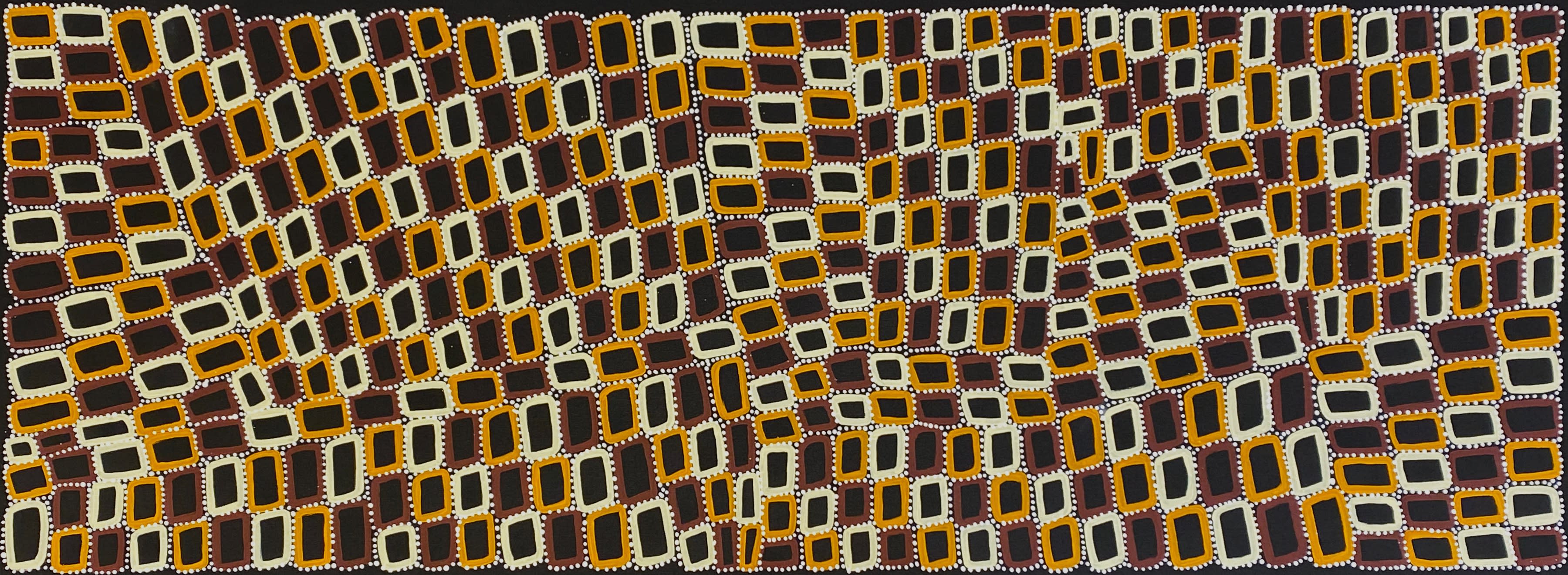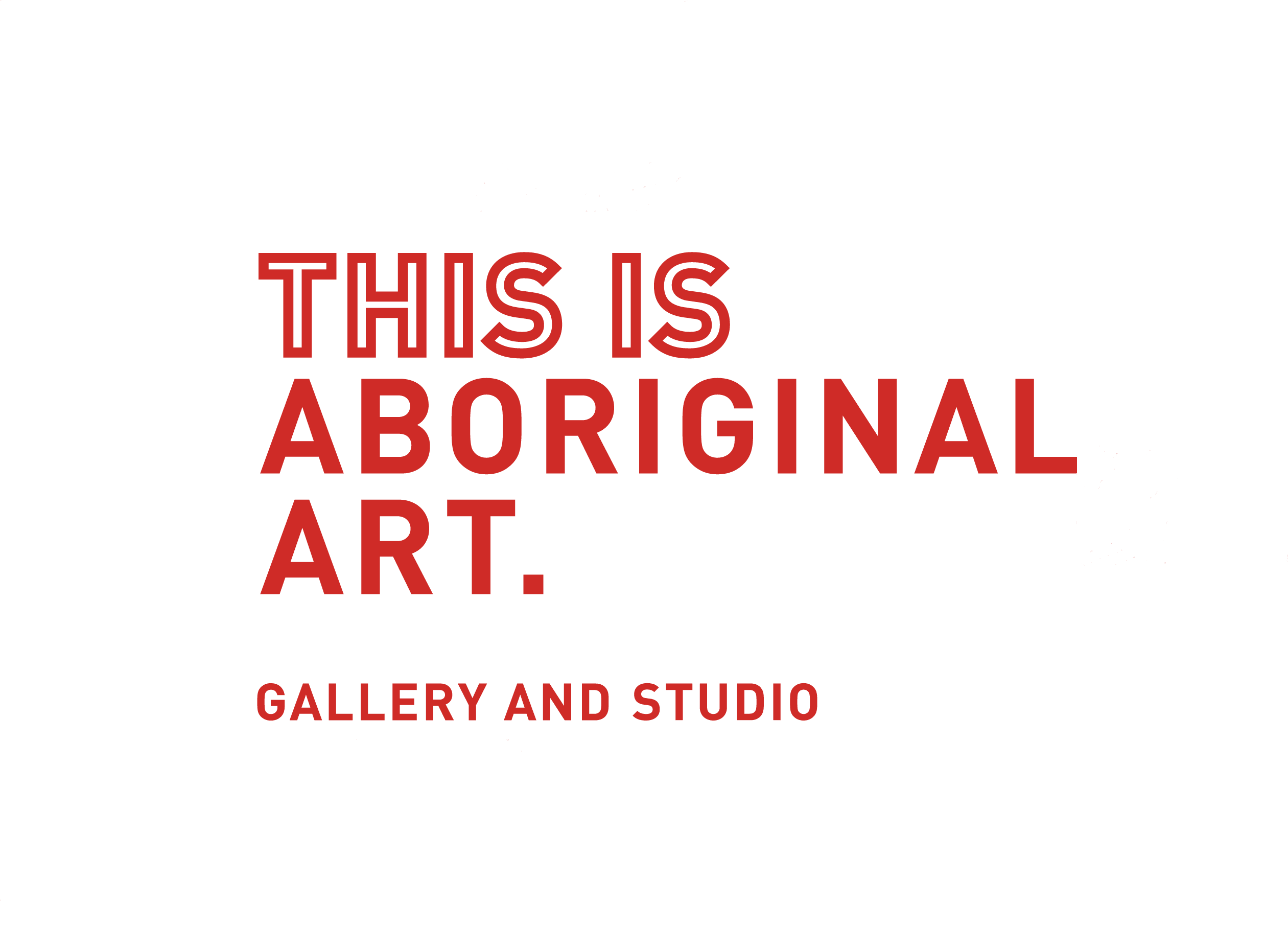
The Tingari Dreaming Cycle is a vast network of Tjukurrpa (Dreaming) songlines that traverse the Western Desert. Hailing from an ancient Creation era, the Tingari Dreaming holds deep significance for the people of the Pintupi language group, as it encompasses a cultural lattice of rituals, sacred sites, social structure and ancient law. Due to the incredibly sacred and secret nature of the Tingari Cycle, deep knowledge is restricted to initiated men or those possessing the appropriate levels of seniority; as such, limited information is available to the general public. For the purposes of this resource, 'Tingari Dreaming', 'Tingari Dreaming Cycle' and 'Tingari Song Cycle' are used interchangeably.
During the ancient Creation era, sacred beings and ancestral elders roamed the open, featureless land. As they travelled, they performed rituals of song and dance, giving form and feature to the desert landscape. Rockholes, riverbeds, hills and roundels, flora and fauna - all elements of the natural environment were created as the Tingari ancestors moved across vast expanses of the desert. The creation stories of the Tingari ancestors have been embodied into song cycles; oral narratives that encompass the traditional laws, beliefs, and social structures that guide Pintupi people, and that have been passed down from initiated elders to the younger generations for tens of thousands of years. Custodianship of sacred Tingari sites is handed down through family lines, in accordance with particular kinship or ‘skin’ groups. Performing the associated song cycles and rituals of sacred sites ensures the passing on of custodial rights, and pays homage to the sacred ancestors - preserving the spiritual ‘health’ of Country and its Dreaming songlines.

Tingari Cycle by Cecily Daniels, 2021, acrylic on canvas, 63 x 98 cm
The emergence of painted Tingari designs coincided with the genesis of the Western Desert contemporary art movement that dawned in the early 1970s - notably with the establishment of the famed Papunya Tula artists collective, as they commenced exhibiting artworks by Pintupi artists such as Ronnie Tjampajinpa and Walangkura Napananangka. Several members of the ‘Pintupi Nine’ - a family group that emerged from the Gibson Desert in 1984 with no previous awareness of European colonisation - forged highly acclaimed artistic careers by painting aspects of the Tingari Cycle, namely three of the brothers, Warlimirrnga, Walala, and Thomas Tjapaltjarri.
Intersected by songlines of the Tingari ancestors, the traditional lands of the Pintupi people encompass a vast expanse of desert - an estimated 21,000 square kilometres. As such, Pintupi artists paint representations of sacred sites and law as it applies to their respective countries. Designs associated with Tingari Dreaming have come to be recognised by their abstraction of geometric forms; concentric circles, rectangular structures, and linear patterns, often mapped or interconnected using the dotting technique that is typical of the Central and Western Desert art movements. Optical-style designs were created by artists such as George Hairbrush Tjungarrayi; gestural, contrasting lines that curve and fold in recurring, hypnotic patterns. Pintupi artists have created unique designs that translate aspects of the sacred Tingari Song Cycles into a visual language, evoking the quiet power of the undulating desert landscape; an artistic meditation on the traditions and laws that stretch far back into the distance of time.

Tingari by Walala Tjapaltjarri, 2021, acrylic on canvas, 70 x 196 cm






